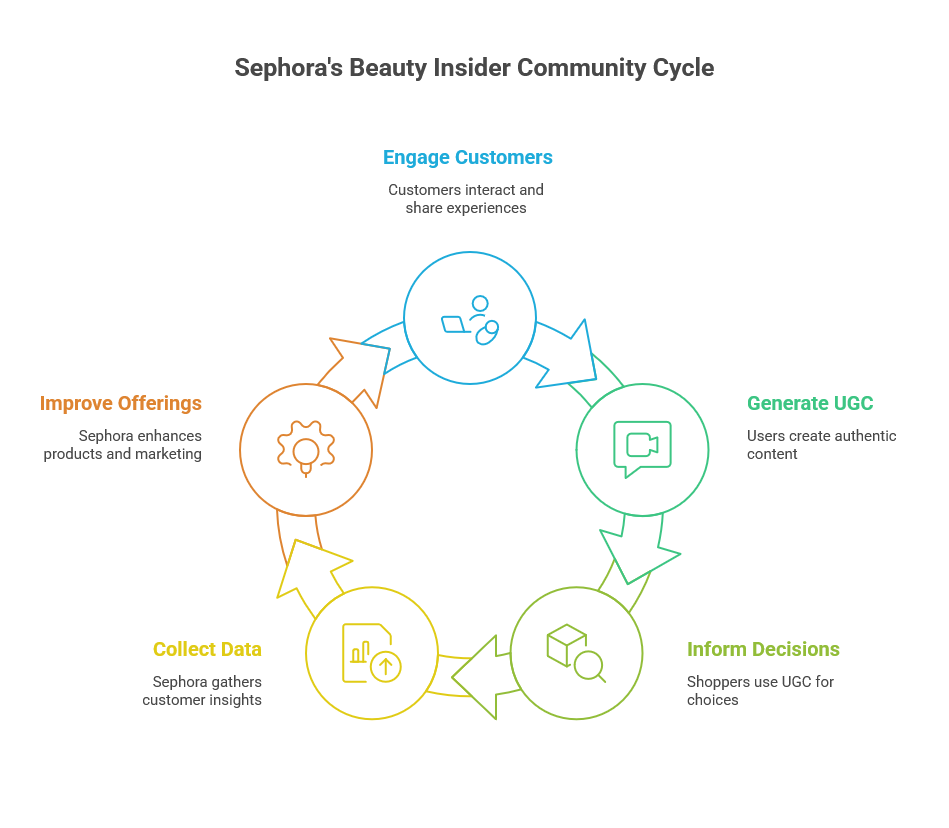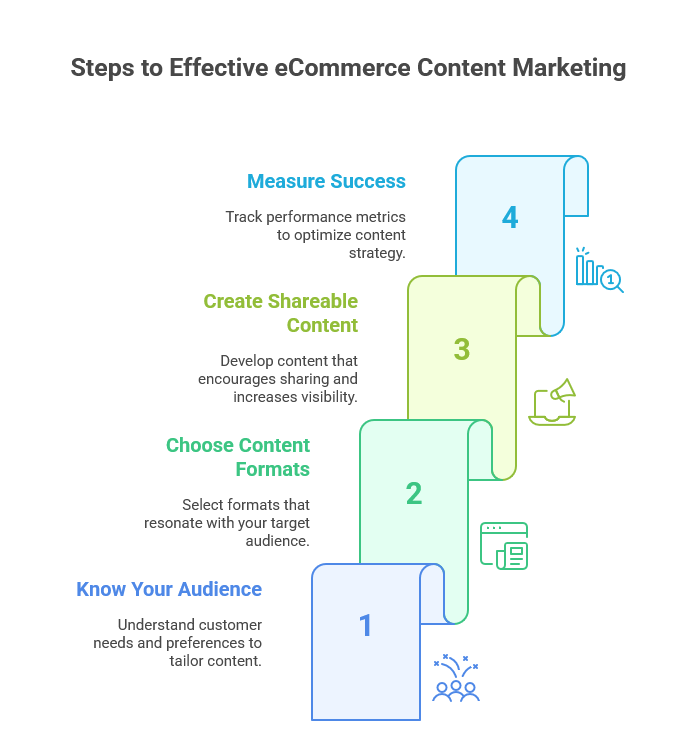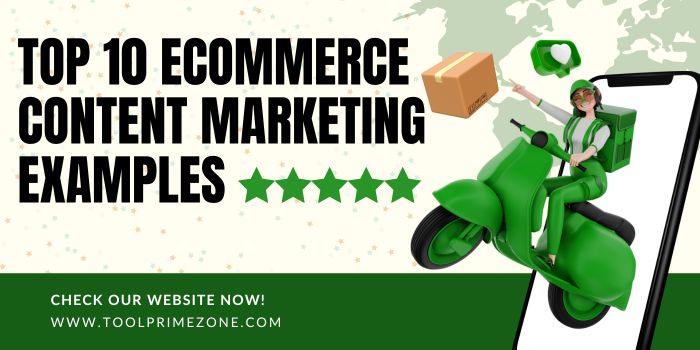eCommerce content marketing is a powerful strategy that helps businesses stand out in today’s digital world. By leveraging content marketing for eCommerce, companies can build brand awareness, engage customers, and drive traffic to their online stores. Effective content marketing is essential for success, whether running a clothing brand, a beauty product line, or a tech gadget business. This article will explore the top 10 eCommerce content marketing examples that successfully engage customers and boost sales and conversions.
1. ASOS’s Interactive Fashion Lookbook
ASOS is a leading online fashion retailer that has mastered the art of interactive content marketing. One of the standout examples is their interactive fashion lookbook. ASOS’s lookbook allows users to explore the latest collections highly engagingly. This content is even more effective because customers can shop the look directly from the page.
This interactive lookbook enhances the shopping experience by allowing customers to visualize how different pieces can be paired. As a result, it encourages visitors to spend more time on the site, explore various options, and make a purchase.
The combination of visual appeal and seamless shopping functionality keeps the customers engaged and drives conversions.
2. Sephora’s Beauty Insider Community
Sephora, the popular beauty retailer, furthers content marketing with its Beauty Insider Community. This platform allows customers to engage with one another, ask questions, share product reviews, and get expert advice from beauty professionals. The community has built a strong sense of belonging among customers, fostering brand loyalty.
User-generated content (UGC) plays a central role here. Beauty enthusiasts can post reviews, upload photos, and share experiences with products. For Sephora, this is invaluable because it provides authentic, trustworthy content that other shoppers can use to inform their decisions.
The Beauty Insider Community also helps Sephora collect data on customer preferences, which they can use to improve future marketing campaigns and product offerings.

3. Amazon’s User-Generated Reviews
One of Amazon’s most significant content marketing strategies is its user-generated review system. This allows customers to leave feedback about products they have purchased, which can significantly impact the purchasing decisions of other shoppers.
Reviews provide essential social proof. When people see that other customers have had positive experiences with a product, they are likelier to trust the product and proceed with the purchase. With millions of products on Amazon, reviews are an indispensable part of the shopping experience, boosting trust and enhancing conversion rates.
Additionally, Amazon has leveraged video reviews and questions and answers, allowing customers to engage more deeply with products and share more authentic feedback.
4. Coca-Cola’s “Share a Coke” Campaign
Although Coca-Cola is not an ecommerce brand, its “Share a Coke” campaign is an excellent example of content marketing that can inspire e-commerce businesses. Coca-Cola replaced its brand name with popular names and phrases on bottles. This personalized marketing strategy allowed customers to find bottles with their names on them and share them with friends and family.
The campaign created a massive buzz on social media, as people posted pictures of their personalized bottles. This strategy didn’t just promote Coca-Cola’s products; it also fostered emotional connections with its customers. The result was increased sales and global brand engagement.
eCommerce brands can learn from this by creating personalized experiences for customers. Customized emails, product recommendations, and packaging can greatly increase customers’ sense of value.
5. Glossier’s User-Generated Content
Glossier, the cult-favorite beauty brand, has successfully leveraged user-generated content (UGC) as a critical part of its content marketing strategy. Glossier often shares customer photos on its website and social media channels, showing real customers using its products. These UGC posts act as authentic endorsements, encouraging new customers to buy products they may not have tried otherwise.
Glossier’s strategy demonstrates the importance of building a community and showcasing real people using the brand. It’s more than just showcasing products; it’s about telling a brand story through customers’ eyes.
By encouraging customers to share their experiences, Glossier builds trust and creates a sense of authenticity that resonates with its target audience.
6. Nike’s Inspirational Stories
Nike has become a household name partly due to its powerful content marketing campaigns. One standout example is their use of inspirational stories featuring athletes who have overcome personal challenges. Nike frequently publishes stories about athletes who push the limits of human performance, which are shared through videos, blog posts, and social media.
Nike’s storytelling approach connects emotionally with customers and aligns with the brand’s core values. These stories inspire customers to pursue their goals and achieve greatness, making the brand’s message more meaningful. By tapping into powerful emotions such as resilience, determination, and success, Nike creates content that motivates and engages its audience.
For eCommerce businesses, the lesson here is clear: connect with your customers emotionally. Share stories of perseverance, success, or failure to show that your brand is relatable and aligned with customer values.
7. Lush Cosmetics’ Social Media Campaigns
Lush Cosmetics is known for its eco-friendly, handmade products, and its social media campaigns reflect the brand’s core values. The company frequently shares content emphasizing sustainability, ethical sourcing, and cruelty-free practices. By highlighting these principles, Lush engages its audience and builds trust among customers who value responsible consumerism. It also uses Instagram to showcase behind-the-scenes content, allowing customers to see how its products are made.
These campaigns help Lush build trust with its customers, who appreciate its commitment to ethical practices. Lush’s social media posts don’t just focus on product sales but on creating an emotional connection with their audience. This approach has garnered a loyal following and a strong brand community.
For eCommerce businesses, Lush’s strategy highlights the importance of transparency. Show your customers the story behind your products, and they will appreciate it. Ethical marketing is becoming a growing trend, and consumers are increasingly seeking brands that align with their values.
8. Zappos’ Personalized Customer Service Content
Zappos, an online shoe and clothing retailer, is renowned for its exceptional customer service, which is central to its content marketing strategy. The company frequently publishes blog posts and videos that advise on selecting the perfect pair of shoes or maintaining leather products. Zappos enhances the customer experience by offering valuable insights, building trust, and ensuring satisfaction with every purchase.It also provides personalized customer service content through phone and live chat, ensuring that every interaction is unique.
What sets Zappos apart is its ability to deliver personalized experiences for every customer. It creates content that caters to the specific needs of its audience, whether through detailed product descriptions, customer reviews, or personalized recommendations.
Zappos shows that exceptional customer service and personalized content go hand in hand. Providing content that helps customers make better purchasing decisions enhances the customer experience and increases sales.
9. Zylvie E-Commerce’s Exclusive Product Launch
Zylvie E-Commerce, a fast-growing online store known for unique, quality products, takes a unique approach to content marketing with its exclusive product launches. Zylvie’s content strategy includes building anticipation around new releases with teasers and sneak peeks on social media, email marketing, and blog posts. They create exclusive behind-the-scenes content that gives customers a “first look” at new products before they’re available to the public.
The marketing campaign for Zylvie’s exclusive launches is centered around a sense of scarcity and urgency, encouraging customers to act quickly. Limited-time offers, countdowns, and early access deals are all key tactics in Zylvie’s content marketing strategy. Their strategy also includes influencer partnerships, where popular social media figures reveal and review products before they hit the shelves.
This approach not only keeps current customers engaged but also attracts new shoppers who are curious about the latest trends. By utilizing content that builds excitement and fosters a sense of exclusivity, Zylvie E-Commerce ensures its product launches are a success.
10. BarkBox’s Monthly Subscription Videos
BarkBox, a monthly subscription box for dog owners, uses unboxing videos as part of its content marketing strategy. BarkBox customers receive a box of toys, treats, and other dog-related goodies each month. The company encourages its subscribers to share their unboxing experiences on social media, and these videos are often shared on the BarkBox website and social channels.
These unboxing videos generate excitement and anticipation among subscribers while attracting new customers. By showcasing the happiness and joy that its customers experience, BarkBox creates a sense of community around its brand.
Unboxing videos are an excellent way for eCommerce businesses to showcase their products in a fun, engaging, and authentic manner.
Why eCommerce Content Marketing is Crucial
Content marketing is a powerful tool for eCommerce businesses because it allows brands to connect with customers beyond just products. You can educate, entertain, and engage your audience by offering valuable content. This helps build trust, leading to higher conversion rates and customer retention.
eCommerce content marketing aims to provide more than just promotional content. It’s about creating a story that resonates with your audience, offering value, and fostering long-term customer relationships.
How to Create an Effective eCommerce Content Marketing Strategy
-
Know Your Audience
Understanding your customers and their needs is essential. Research your target audience’s preferences and pain points. Tailor your content to address these needs and create content that speaks directly to them. -
Choose the Right Content Formats
Different types of content appeal to various audiences. Choose formats that resonate with your target customers, whether blog posts, social media posts, videos, or infographics. Mix up your content types to keep things fresh and engaging. -
Create Shareable Content
Focus on creating content that people will want to share. Whether it’s a funny meme, an inspiring story, or a practical product guide, content that gets shared increases brand visibility and can drive more traffic to your site. -
Measure Your Success
Track your content’s performance by looking at metrics like engagement, traffic, and conversions. This data will help you optimize your content strategy and deliver the right content to your audience.

Frequently Asked Questions (FAQ)
-
What is eCommerce content marketing?
eCommerce content marketing creates and shares valuable, relevant content to attract, engage, and retain customers. It includes blog posts, videos, product reviews, and social media updates. -
How does user-generated content benefit eCommerce businesses?
User-generated content builds trust and authenticity. It shows real customers using and enjoying your products, which can influence potential buyers to purchase. -
Can content marketing increase sales for eCommerce stores?
Yes, content marketing can increase sales by driving more traffic to your site, engaging customers, and providing valuable information that helps guide purchasing decisions. -
What are some effective content formats for eCommerce marketing?
Blog posts, videos, customer reviews, and product demos are some of the most effective content formats for eCommerce marketing. -
How often should eCommerce businesses post content?
Consistency is important, but the frequency depends on your resources and audience. Aim for regular posting that keeps your audience engaged without overwhelming them.

